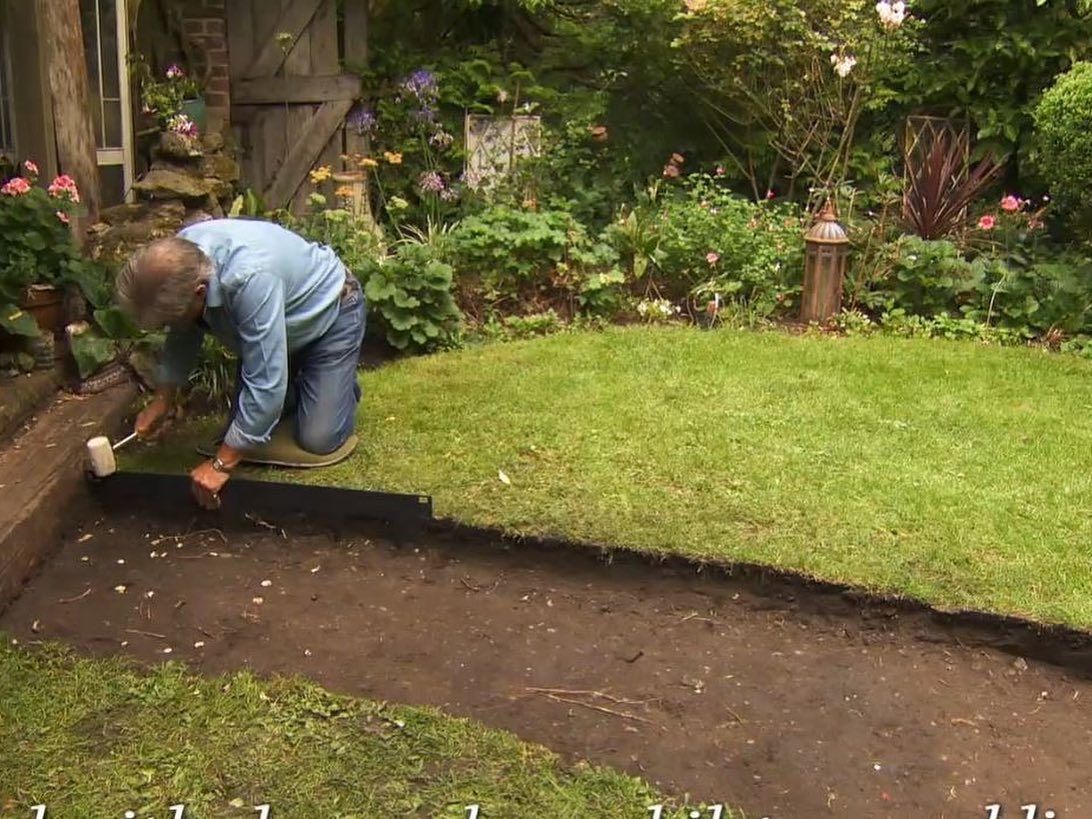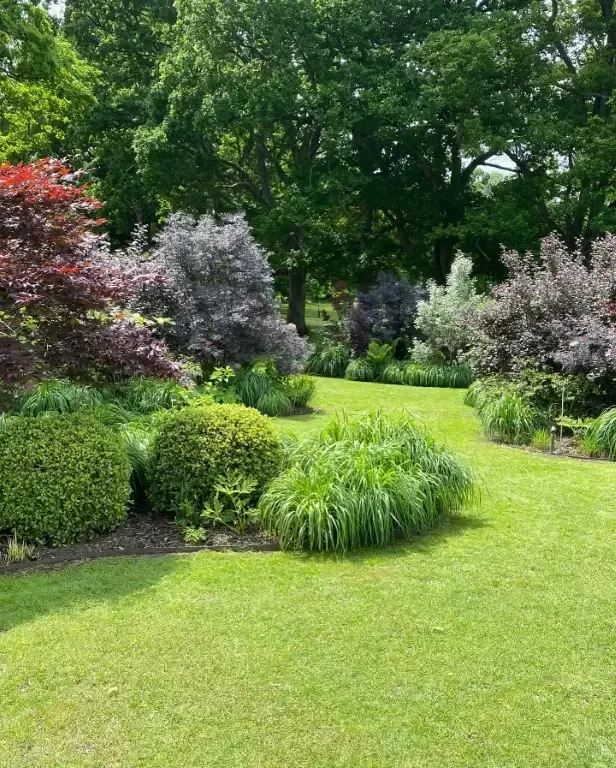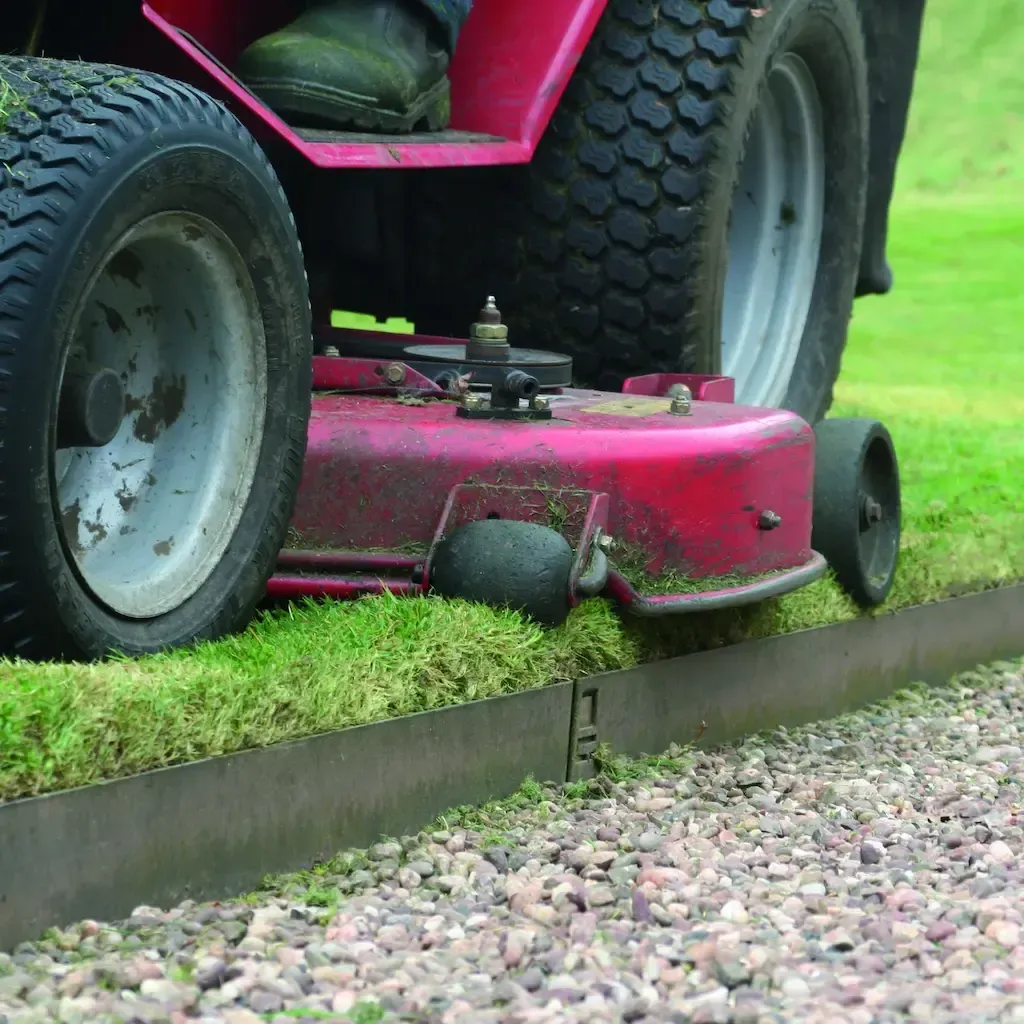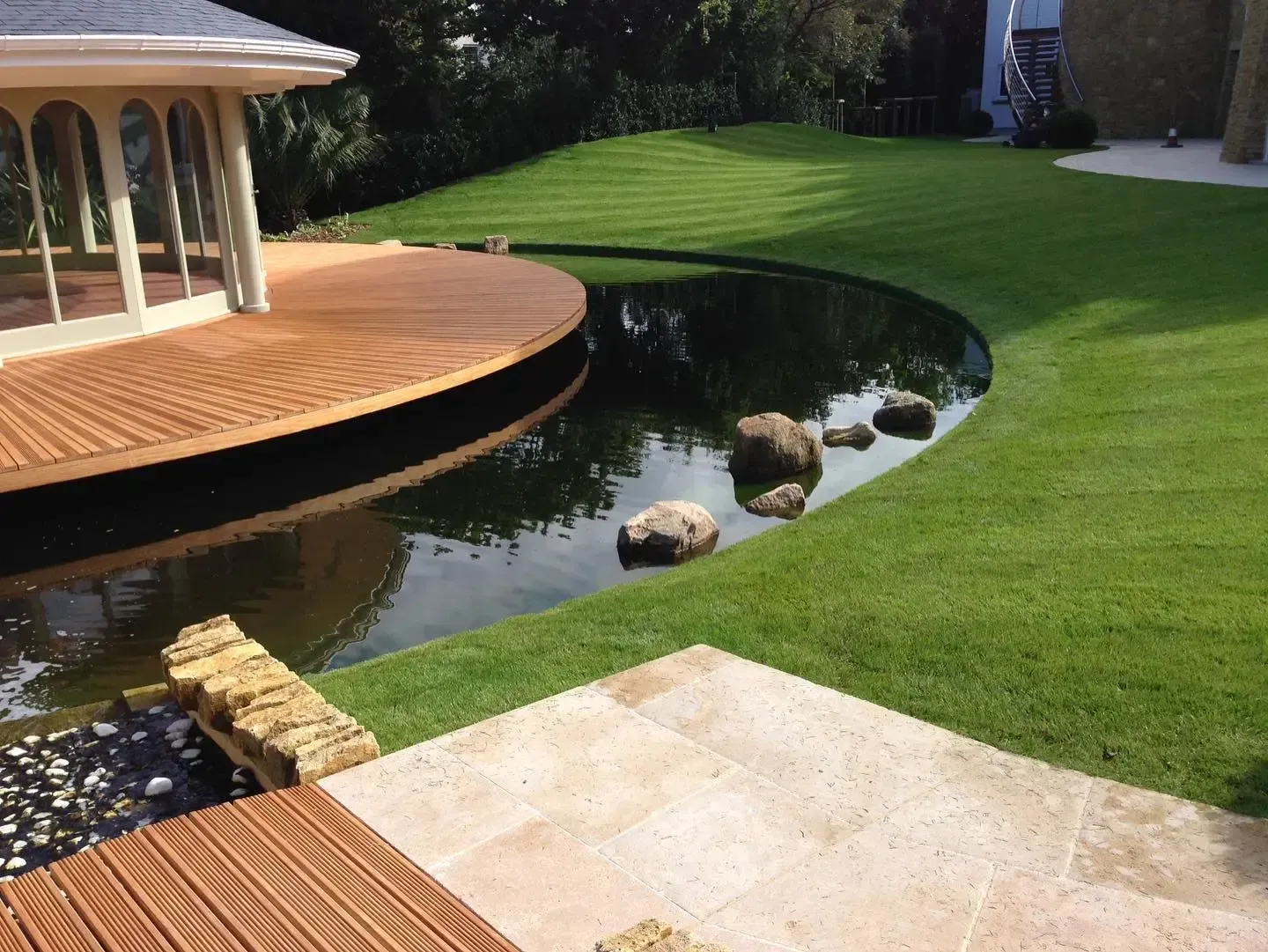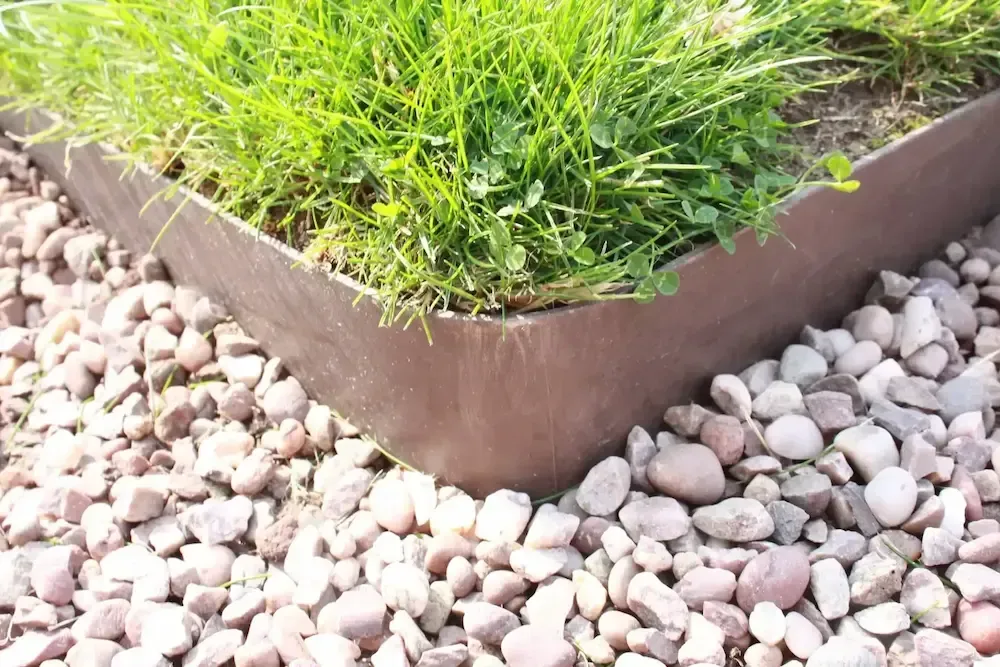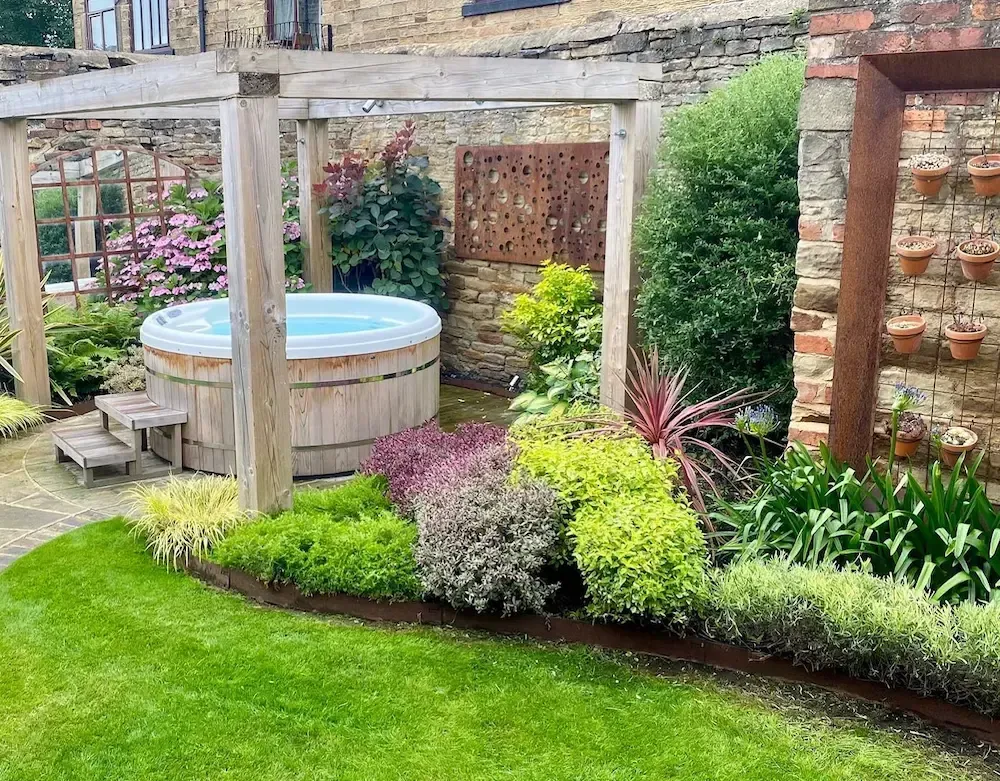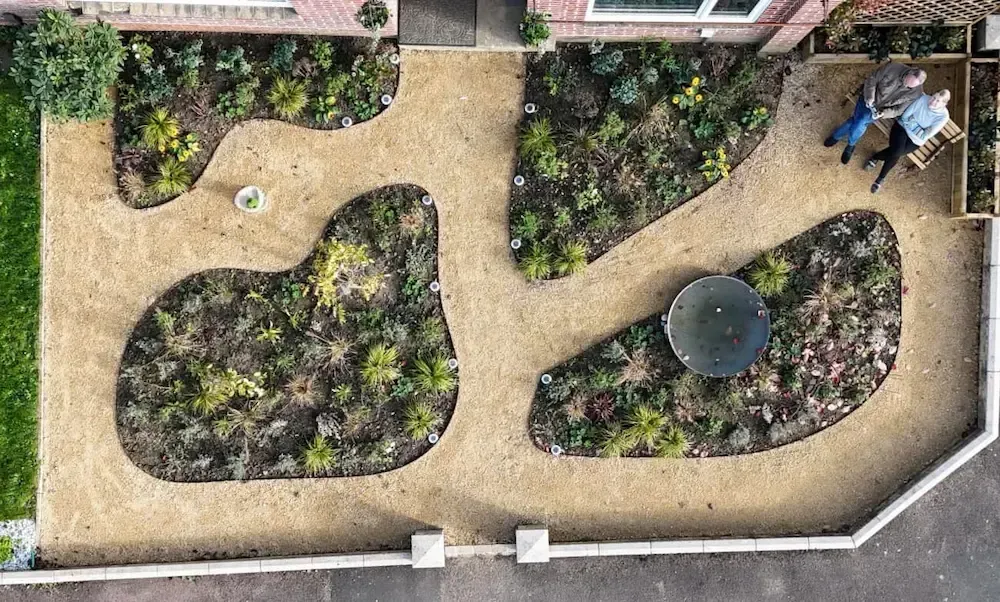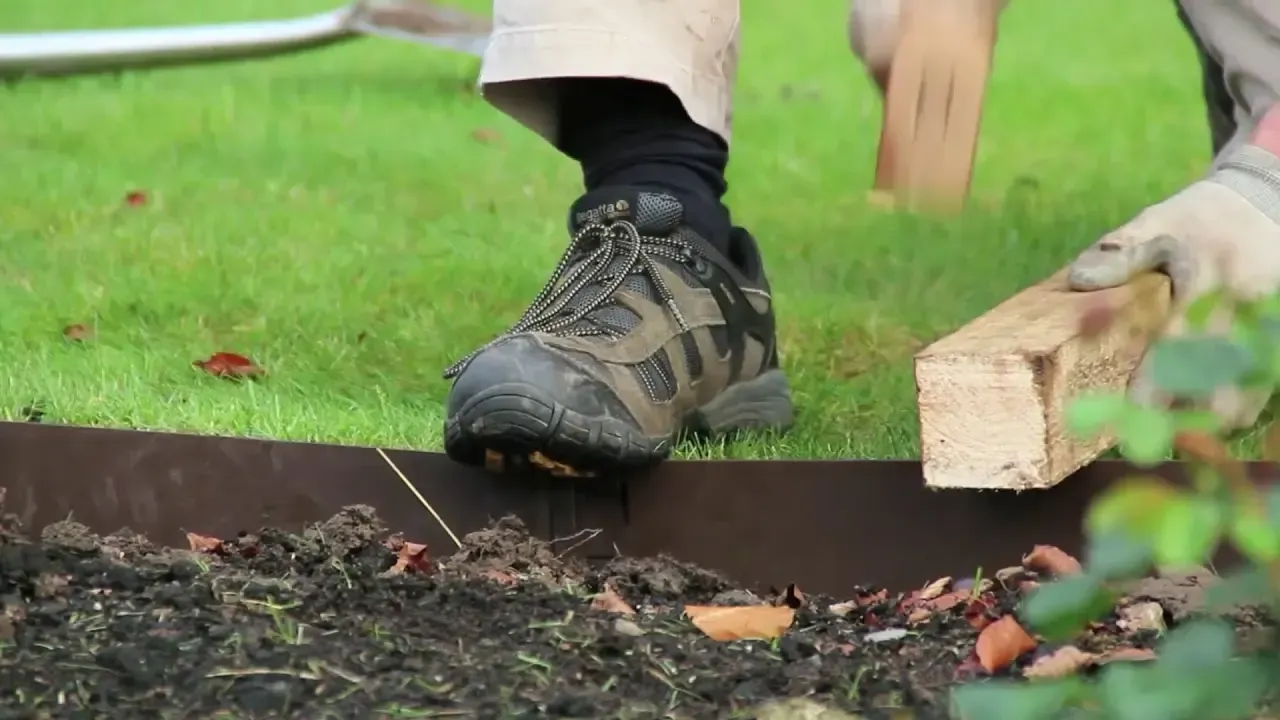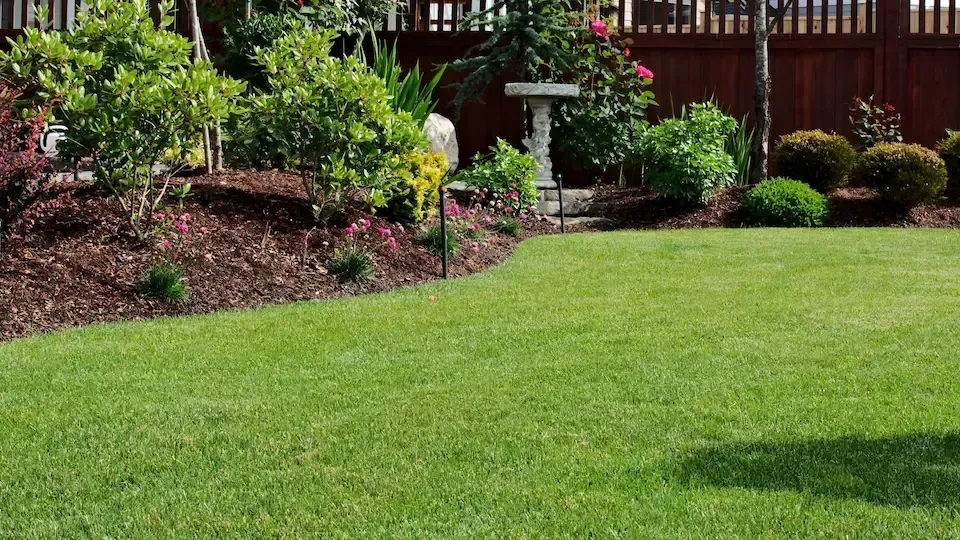How to get a perfect lawn: the secret of landscape edging
How to achieve the perfect lawn can feel like one of life’s great mysteries. A lush green expanse elevates a garden design; unfortunately, creating and maintaining a flawless lawn involves more than a regular mow throughout the growing season. If your lawn is a space of distraction rather of relaxation, now is the time to make plans and devise a course of action. Spring and autumn are the best times of year for lawn care and to sow grass seeds.
Prepare your lawn
Fail to prepare and prepare to fail: to get the best possible outcome for your lawn, it’s crucial to ensure the soil is in the best possible condition for the grass seeds to germinate and thrive. This can mean levelling the lawn to remove debris, filling low spots with soil, and using a lawn roller to flatten the surface. To avoid compaction, aerate the soil regularly by creating small holes to improve air, water, and nutrient flow. Aerating and feeding your lawn by adding organic matter, such as manure or mulch, improves the soil condition.
Whether you are reconditioning your lawn or starting from scratch, any weeds need to be removed. There are weedkillers you can use, but the first line of control should be by good practice in cultivation methods and manual removal.
How to remove lawn weeds without chemicals
Choose a dry day with a light wind so any seedlings do not re-root in moist soil. Hand pull or use a fork to remove weeds. It’s crucial, especially for an invasion of Onehunga weed to remove every part of the plant including the roots to ensure they don’t reappear. For stubborn weeds, apply corn gluten meal and add water in both spring and autumn, taking care to restrict the application exclusively to the affected area. Similarly, mix a gallon of white distilling vinegar, half a cup of salt and a tablespoon dishwashing soap and spray on the weeds, taking care to only spray the weeds.
The role of landscape edging in lawn perfection
An often-overlooked secret to a pristine lawn is garden edging. Landscape edging serves multiple purposes in lawn care. While it ensures a neat and orderly appearance by defining the boundaries between your lawn, garden beds, paths, and other landscape features, it boosts healthy lawn growth.
Soil structure is crucial for plant health, as compromised soil hinders nutrient absorption and causes diseases. Metal landscape edging prevents erosion, reduces compaction, and maintains soil integrity so your lawn has the best opportunity to thrive. It is also a physical barrier preventing weeds and grasses from invading garden beds while keeping mulch and soil in place.
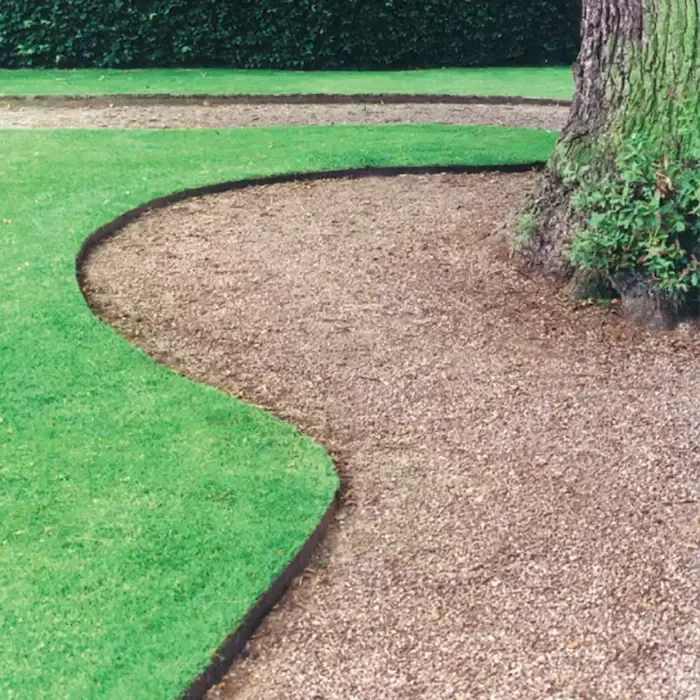
Steel landscape edging: a perfect fit for New Zealand gardens
For those in New Zealand looking to enhance their lawns, steel garden edging NZ products offer an ideal solution. The country's diverse climate and soil conditions pose challenges for lawn care, but steel edging is resilient enough to handle these variations. Whether you're in the cooler southern regions or the warmer north, steel landscape edging provides a robust barrier to maintain the integrity of your lawn and garden beds. Steel garden edging stands out as a superior choice of landscape edging for several reasons:
- Durability and longevity: incredibly strong and durable steel edging withstands the elements for years without deteriorating remaining intact and functional without the need for replacements or repairs
- Clean, sharp lines: one of the hallmarks of a perfect lawn is its clean, sharp edges. Steel landscape edging provides precise, defined borders that enhance the overall aesthetic of your garden with a professional, polished look.
- Versatility: Steel garden edging is available in various styles, finishes, and heights. Corten steel edging develops a beautiful, rust-like patina over time, adding a rustic charm to your garden; Everedge’s Classic range is available in brown or black, both of which can be used to create garden beds, define pathways, or as metal tree ring edging to protect and highlight individual trees.
- Ease of installation: installing steel garden edging is straightforward, a rewarding DIY project. Once installed, it requires minimal maintenance, making it a practical choice for busy homeowners.
Incorporating steel garden edging into your landscaping routine is a game-changer for achieving the perfect lawn. Its durability, clean lines, and versatility make it an attractive addition to a garden design, but it’s capacity to promote healthy lawns and plants make it an excellent investment. Keeping a lawn in perfect condition takes time and energy, but garden edging is one method to help you work smarter not harder. If you have any questions about Everedge landscape edging or have a project you would like to discuss, contact us today on 021 925 389.
